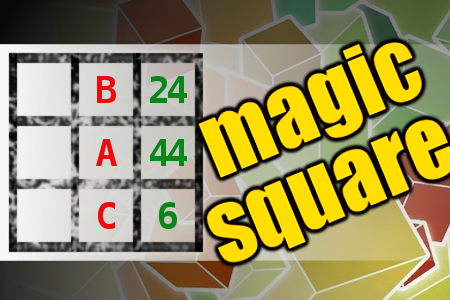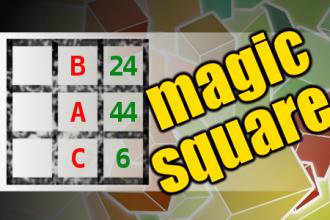MAGIC SQUARE: Calculate A+B*C
The aim is to place the some numbers from the list (6, 7, 13, 17, 18, 24, 43, 44, 50, 72) into the empty squares and squares marked with A, B an C. Sum of each row and column should be equal. All the numbers of the magic square must be different. Find values for A, B, and C. Solution is A+B*C.
Funniest Joke of The Fringe of year 2019 + nine shortlisted
I keep randomly shouting out 'Broccoli' and 'Cauliflower'-I think I might have florets.
Author: Swedish comedian Olaf Falafel.
The Winner of Dave's "Funniest Joke of The Fringe" of year 2019 - award with the niche culinary pun.
Ten jokes made the 2019 shortlist. Here the rest of nine are:
"Someone stole my antidepressants. Whoever they are, I hope they're happy"-Richard Stott
"What's driving Brexit? From here it looks like it's probably the Duke of Edinburgh" - Milton Jones
"A cowboy asked me if I could help him round up 18 cows. I said, 'Yes, of course. - That's 20 cows'" - Jake Lambert
"A thesaurus is great. There's no other word for it" - Ross Smith
"Sleep is my favourite thing in the world. It's the reason I get up in the morning" - Ross Smith
"I accidentally booked myself onto an escapology course; I'm really struggling to get out of it" - Adele Cliff
"After learning six hours of basic semaphore, I was flagging - Richard Pulsford
"To be or not to be a horse rider, that is Equestrian" - Mark Simmons
"I've got an Eton-themed advent calendar, where all the doors are opened for me by my dad's contacts" - Ivo Graham
Photo credit: Alan Powdrill – www.alanpowdrill.com

